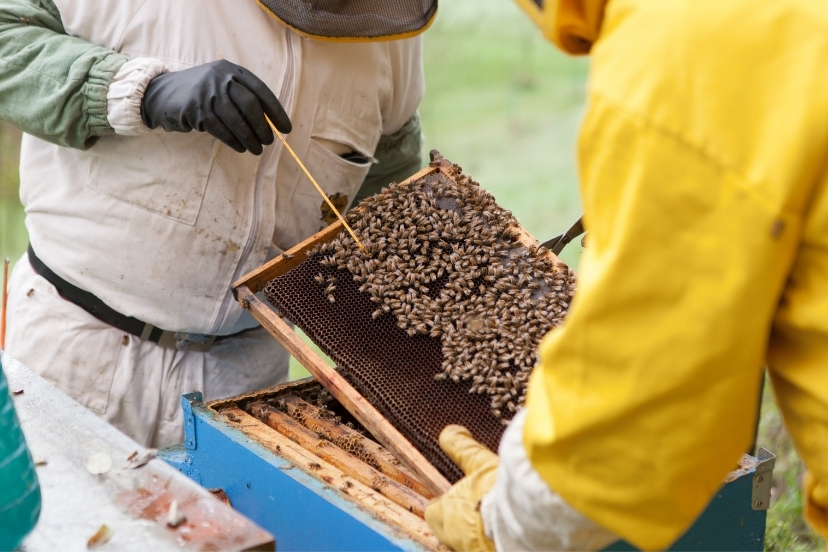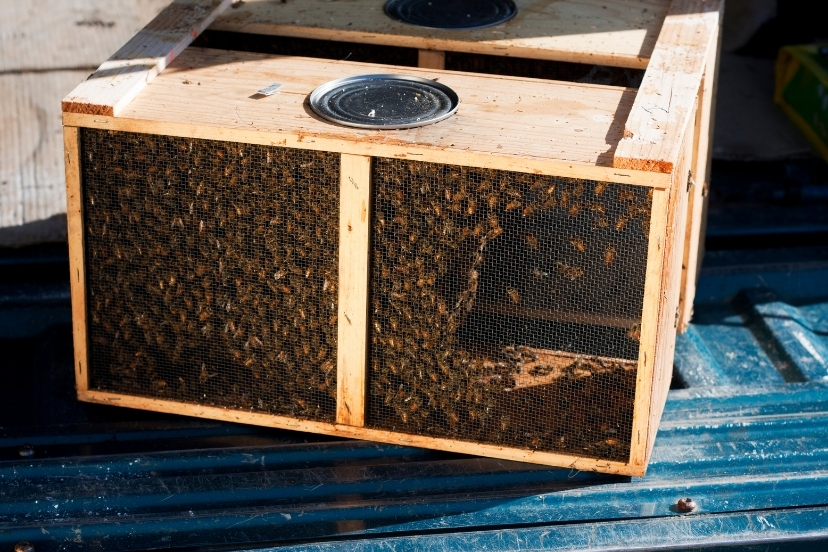Here is a question submitted by Claudio (Italy).
Me and my friend have a bee hive each but they are like 10-15 meters away from each other but now one of the bee hive family has grow bigger and they’ve done a new hive on a tree. How do I know whose it is??
And it’s closer to my hive. Lets say my friends hive is on the right side and mine is in the middle and the new hive is on the left. How do I know it’s mine?
Hi Claudio, that’s an interesting question, but you may not like the answer.
Might Not Know Parent Colony
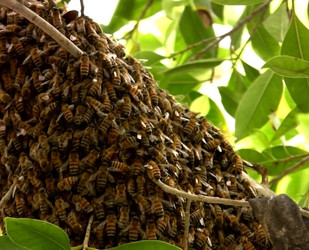 The truth is that there’s probably no way to be absolutely certain which hive is the parent colony.
The truth is that there’s probably no way to be absolutely certain which hive is the parent colony.
First, let me explain that I’m assuming that the hive in a tree you refer to is a swarm.
If that’s the case, you don’t mention whether you’ve hived the swarm or how long it has been there.
Swarm Only Stays Until It Decides On A Permanent Place
If you haven’t hived it and it hasn’t been there long, it may soon leave (maybe by the time you read this).
Usually when a honey bee swarm leaves a hive, it clusters at some intermediate location while it decides upon a permanent home.
That may be the case for the bees you see in the tree, and if so, it probably will leave soon. It could be there a few days before leaving, a few hours, or even just a few minutes.
Might Stay and Start Building Comb
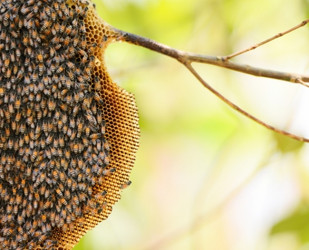
If it’s just on a branch, and not inside a hollow portion of a tree, then it’s less likely that the swarm will be staying there.
Bees usually choose a sheltered area in which to start a new colony.
But it’s not unheard of for a swarm to settle permanently in an exposed location such as the branch of a tree (these colonies don’t usually survive for long).
Things To Check To Identify Parent Colony
To make a guess as to which hive is the parent colony of the swarm, there are several things you can check:
1. Look For Marked Queens
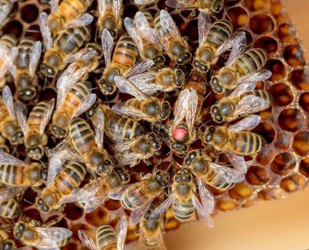
That would mean that one of your 2 hives no longer has a marked queen. That alone would not be absolute proof, though, because a colony can supersede an old queen without swarming.
2. Look for Queen Cells
Check your two hives and look for queen cells (they look like a peanut attached to the comb). If one hive has queen cells, that’s probably the hive that threw the swarm.
3. Look At Brood For Larvae or Eggs
Look at the brood in each of your hives. When a colony is preparing to swarm, the old queen normally stops laying for several days before the swarm leaves. That’s so that she can slim down and lose weight so that she’s better able to fly.
So the hive that threw the swarm probably has no extremely young larvae or eggs (unless the new queen has already begun to lay eggs). The hive that didn’t swarm should have an uninterrupted progression of brood of all ages.
4. Stronger Hive Probably Didn’t Swarm
You mentioned that one hive is stronger than the other. That could be an indication as to which hive swarmed, with the stronger hive being the colony that did not swarm.
That’s not a sure thing, however, since colony size alone does not determine whether a colony swarms or not. It’s possible for a strong hive not to swarm while a smaller, less populous hive does swarm.
Only Marked Queen Would Be Absolute Proof
You can check these things, but none will absolutely prove which hive swarmed (unless one of the hives had a uniquely marked queen that is now in the swarm). But you might be able to make a fairly reasonable guess as to which hive swarmed.
Neither Hive
Of course, there is one other possibility: The swarm in the tree is from neither of your two hives. It’s a possibility that can’t be completely discounted.
It’s also possible that one of your hives swarmed and went elsewhere, and the swarm in the tree is from neither hive.
One thing’s for sure, though: your hives are too close to each other for the distance from hive to swarm to be a valid clue as to which hive swarmed.
Hope this helps more than it confuses, and good luck!

